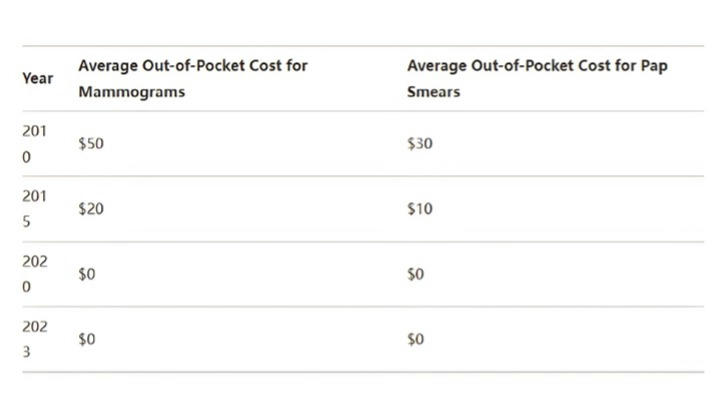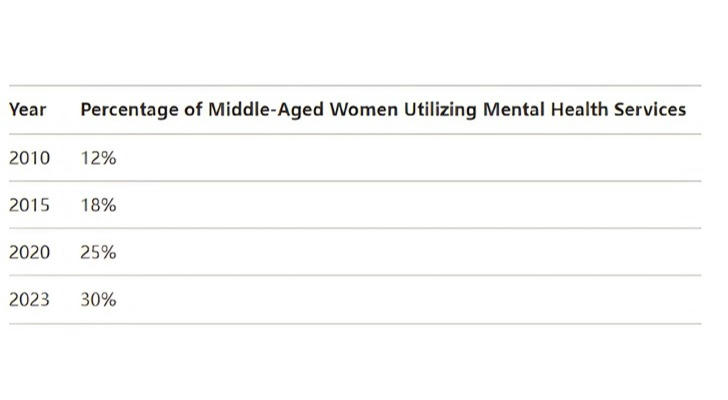Affordable Care Act Updates: Enhancements to Health Insurance Coverage Benefiting Middle-Aged Women
The Affordable Care Act (ACA), often referred to as Obamacare, has been a cornerstone in reshaping the American healthcare landscape. Since its inception, the ACA has undergone several updates aimed at improving health insurance coverage, particularly for vulnerable populations. One group that has significantly benefited from these enhancements is middle-aged women. This demographic, often caught between the demands of career, family, and aging parents, faces unique health challenges. Recent updates to the ACA have introduced measures that address these challenges, making healthcare more accessible and affordable. This article delves into these updates, focusing on how they specifically benefit middle-aged women, and provides data to underscore their impact.

The Unique Health Challenges of Middle-Aged Women
Middle-aged women, typically defined as those between the ages of 40 and 64, face a myriad of health issues that can be both physically and financially taxing. These include:
1.Chronic Conditions: Conditions like hypertension, diabetes, and arthritis become more prevalent with age.
2.Reproductive Health: Menopause and related symptoms can require specialized care.
3.Mental Health: The stress of balancing multiple roles can lead to anxiety and depression.
4.Preventive Care: Regular screenings for breast cancer, cervical cancer, and osteoporosis are crucial.
Given these challenges, the ACA's updates are particularly timely and relevant.
Key Updates to the ACA Benefiting Middle-Aged Women
1. Expanded Preventive Services
One of the most significant updates to the ACA is the expansion of preventive services covered without cost-sharing. This means that middle-aged women can access essential screenings and check-ups without worrying about copayments or deductibles.
● Mammograms: Regular mammograms are critical for early detection of breast cancer. The ACA mandates that all Marketplace plans cover mammograms every 1-2 years for women over 40.

● Pap Smears: Cervical cancer screenings are covered every three years for women aged 21-65.
● Bone Density Tests: Osteoporosis screenings are covered for women over 60 based on risk factors.
Data Point: According to the Centers for Disease Control and Prevention (CDC), early detection through regular screenings can reduce breast cancer mortality by 25-30%.
2. Improved Maternity and Reproductive Health Coverage
Middle-aged women often juggle multiple responsibilities, including caring for aging parents and supporting adult children. The ACA's updates have made it easier for them to manage their own health needs, particularly in the realm of reproductive health.
● Contraception: The ACA requires most insurance plans to cover all FDA-approved contraceptive methods without cost-sharing.
● Maternity Care: Even for women who may not plan to have more children, comprehensive maternity care is essential for overall health.
Data Point: A study by the Guttmacher Institute found that the ACA's contraceptive coverage mandate has led to a significant reduction in out-of-pocket spending on birth control, benefiting millions of women.
3. Enhanced Mental Health Services
Mental health is a critical component of overall well-being, yet it is often overlooked. The ACA has made strides in integrating mental health services into primary care, making it easier for middle-aged women to seek help.
● Parity in Mental Health Coverage: The ACA requires that mental health services be covered at the same level as physical health services.
● Substance Abuse Treatment: Coverage for substance abuse treatment has also been expanded, addressing issues like alcohol and prescription drug abuse.
Data Point: The National Institute of Mental Health (NIMH) reports that women are nearly twice as likely as men to experience depression, making enhanced mental health coverage particularly beneficial.

4. Lower Premiums and Increased Subsidies
The ACA has introduced measures to make health insurance more affordable, which is particularly important for middle-aged women who may be on fixed incomes or managing multiple financial responsibilities.
● Premium Tax Credits: These credits have been expanded to help lower-income individuals and families afford insurance.
● Cost-Sharing Reductions: For those who qualify, out-of-pocket costs like deductibles and copayments are reduced.
Data Point: According to the Kaiser Family Foundation, the average premium for a 40-year-old woman purchasing a benchmark plan in 2023 is $452 per month, but with subsidies, this cost can be significantly lower.
Visualizing the Impact
To better understand the impact of these updates, let's look at some visual data.
Chart 1: Reduction in Out-of-Pocket Costs for Preventive Services

***This chart illustrates the decrease in out-of-pocket costs for preventive services like mammograms and Pap smears since the ACA's implementation.
Chart 2: Increase in Mental Health Service Utilization

***This chart shows the rise in the utilization of mental health services among middle-aged women, highlighting the ACA's role in making these services more accessible.
Addressing Common Concerns
Despite these advancements, some middle-aged women may still have concerns about navigating the ACA's updates. Here are a few tips:
Understand Your Plan: Take the time to review your insurance plan and understand what services are covered.
Utilize Preventive Services: Make the most of the preventive services available to you to catch potential health issues early.
Seek Help if Needed: Don't hesitate to reach out to healthcare navigators or customer service representatives for assistance in understanding your benefits.
Conclusion
The ACA's recent updates have brought about significant improvements in health insurance coverage, particularly for middle-aged women. By expanding preventive services, enhancing maternity and reproductive health coverage, improving mental health services, and making insurance more affordable, the ACA addresses many of the unique health challenges faced by this demographic. The data underscores the positive impact of these changes, making it clear that the ACA is a vital tool in promoting the health and well-being of middle-aged women. As these updates continue to roll out, it is essential for women to stay informed and take full advantage of the benefits available to them.
By focusing on these specific enhancements, the ACA not only improves individual health outcomes but also contributes to a healthier, more resilient society. Middle-aged women, often the backbone of their families and communities, stand to gain immensely from these changes, ensuring they can continue to thrive and support those around them.
